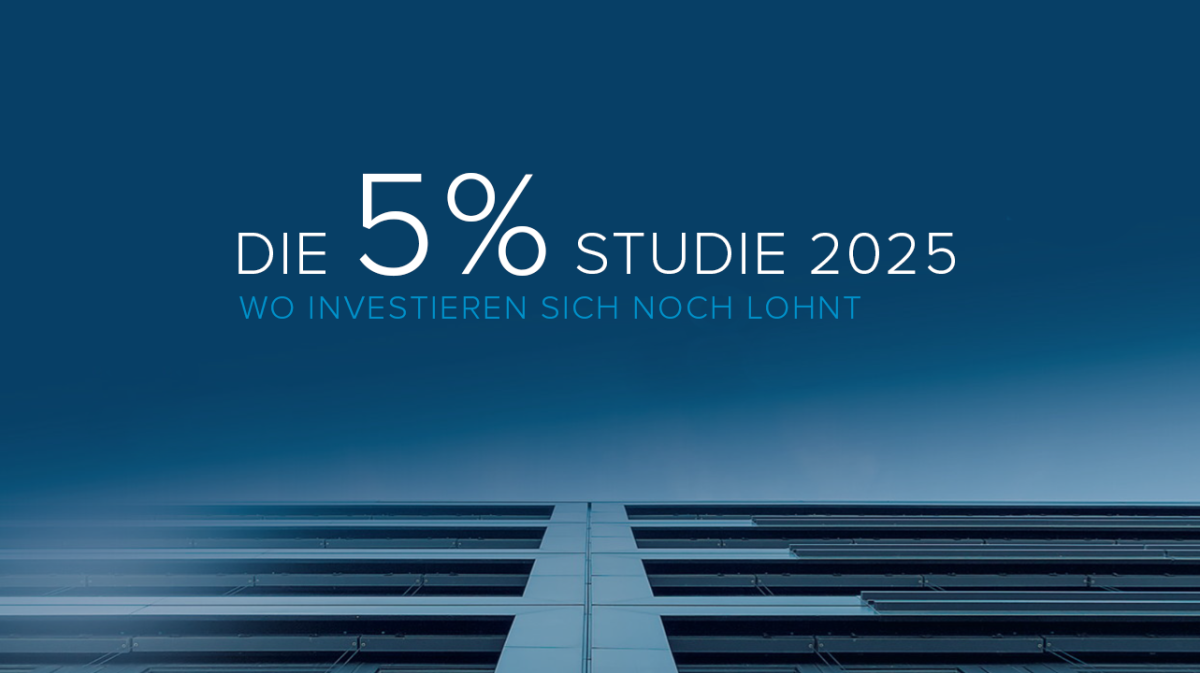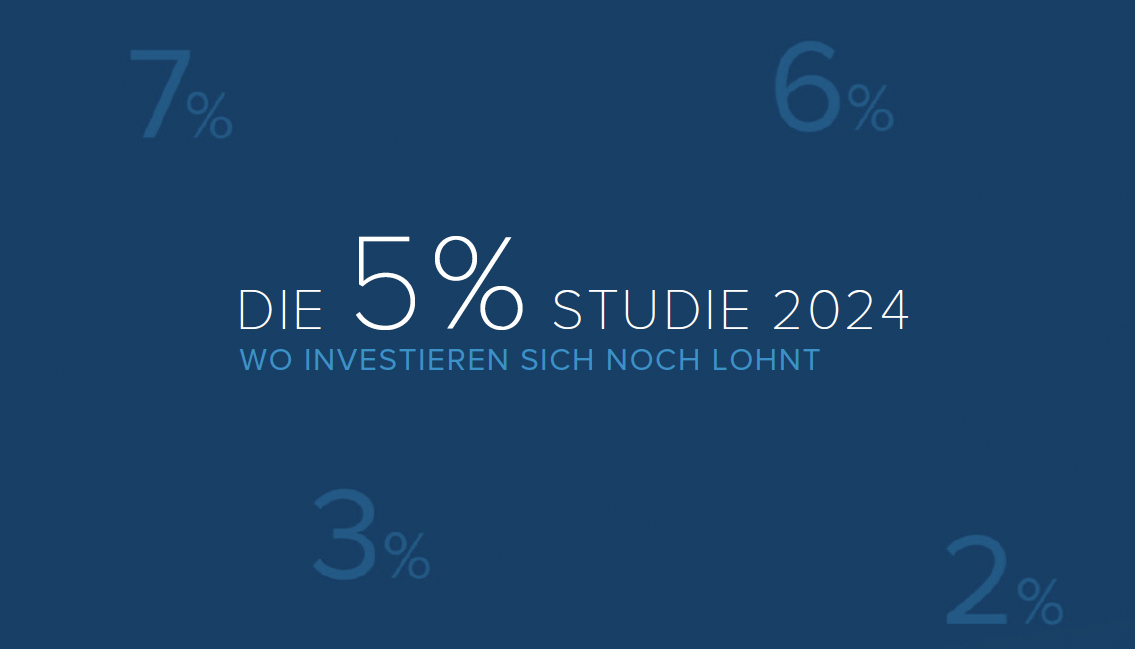Germany, France, Netherlands - where to invest?
Where are there still attractive investment opportunities in the office and residential market in Germany - and outside? For the three-country study that we published together with Becken and INDUSTRIA, we also looked at the large French and Dutch markets.
The large European real estate markets of Germany, France and the Netherlands certainly have differences in their size, structure and local framework conditions. Nevertheless, they are united by the fact that their largest and most important cities are models of success and have repeatedly reinvented themselves in the past to set the course for the future. Therefore, these cities are the focus of this study. For the study, the major residential and office markets - 22 residential and 17 office markets - in the three countries mentioned were examined and assessed with regard to their investment suitability. The selection of real estate markets was primarily based on market size and covers the largest cities and residential markets in the three countries.
Amsterdam most attractive target market for residential investments
Although the structure of the large housing markets in Germany, France and the Netherlands (e.g. share of tenant households and ownership structure) is national, all of them have gained in importance, population and economic power in the context of the urbanisation megatrend in recent years. This triggers a corresponding demand for housing; however, this does not mean that an investment in the residential asset class can always be recommended.
And the result? Amsterdam and Munich are by far the most attractive cities for residential investments. Amsterdam is particularly convincing due to its good development in employment figures, the good age structure as well as the high income level and income development. In addition, the prime yield for residential real estate in Amsterdam is still 3.0 per cent, which is more than 0.5 percentage points higher than in Paris, Berlin or Munich.
The main difference between Amsterdam and Munich with otherwise very similar attractiveness values is the significantly higher yield level in Amsterdam. Frankfurt/Main comes in third place, followed by Paris, Utrecht and Berlin. The lower end is made up by Hanover and Lille, with some distance to the other cities. Since the ranking analysed those housing markets in Germany, France and the Netherlands that have comparatively positive demographic and economic framework data, a lower place in the ranking does not per se mean that investments in these markets are entirely unsuitable. Even in lower-ranked cities such as Lille, Hanover or Nice, there are attractive investment opportunities with the appropriate local market knowledge and a product geared to demand.
Berlin and Munich at the top of the office market scoring
The large office markets of Germany, France and the Netherlands are facing a whole series of challenges, because the pandemic has changed the way many office workers work. A complete return to the office seems inconceivable for many, and as a result many companies are adapting their office concepts and changing the volume and structure of office space demand. However, depending on the economic structure and the defining industries of the cities analysed, these effects have varying degrees of impact. In 2021, the supply of office space still grew in most
Although the supply of office space still grew quite dynamically in most office markets in 2021, the changed framework conditions will lead to a noticeable reduction in new construction activity almost everywhere from 2022/2023.
Overall, some trends are evident across all the markets considered, such as the strong increase in the importance of ESG criteria for office investments. However, the heterogeneity of the office markets means that local market conditions do not allow for uniform answers to the main challenges of the office market.
And the result? In the European office property markets, Berlin is at the top of the ranking, ahead of Munich. It is followed at some distance by Amsterdam, Hamburg and the Central Business District of Paris. The particular strength of Berlin's office market lies in the strong development of the number of office employees, the forecast population development, the low vacancy level and the significant increase in prime rents. In a direct comparison with Munich, the German capital outshines the Bavarian capital primarily due to the sheer size of its office market. In addition, employment development in Munich has been below average in recent years. At the bottom of the ranking are the French cities of Marseille and Lille.
Sustainability regulations offer opportunities for investors
Parallel to the economic challenges surrounding the energy crisis, disrupted supply chains, interest rate turnaround and record inflation, the requirements of the capital market and the regulatory environment to make real estate investments ESG-compliant are increasing. The new ESG guidelines are both a challenge and an opportunity. In particular, there is great investment potential in the energy upgrading of existing buildings, the transformation of real estate and the construction of new sustainable projects. In the three markets studied, Germany, France and the Netherlands, many efforts can be seen to contribute to achieving the sustainability goals in the EU. The Netherlands is the most advanced. From 1 January 2023, for example, a minimum energy requirement will apply to office buildings, which in practice will result in a ban on use if not complied with. At the end of 2021, only 42 per cent of all office buildings could show the necessary energy label, resulting in an enormous need for investment.
Conclusion
Investments in the office and residential markets of Germany, France and the Netherlands are generally recommendable, provided that the investment case incorporates local market knowledge, comprehensively meets sustainability requirements, provides office space or residential space that meets demand in attractive locations at affordable conditions, and incorporates realistic assumptions regarding construction costs, financing and transaction conditions.
Note: You can download the study free from the website of Becken or INDUSTRIA.
Contact person: Felix Embacher, Head of Research & Data Science at bulwiengesa, embacher@bulwiengesa.de
You might also be interested in
For our magazine, we have summarized relevant topics, often based on our studies, analyses and projects, and prepared them in a reader-friendly way. This guarantees a quick overview of the latest news from the real estate industry.
Little movement on the German real estate market
For the eleventh time, bulwiengesa presents its comprehensive analysis of the German real estate markets. The results of this year's 5% study, conducted in collaboration with ADVANT Beiten, show that the German real estate market is characterized by widespread stagnation. At the same time, niche segments are becoming increasingly attractive. The market is increasingly rewarding professional asset management and specialist knowledge—a trend that separates the wheat from the chaffFive per cent returns no longer illusory even for core properties
The ‘5% study - where investing is still worthwhile’ celebrates its tenth anniversary. Since the first edition was published, the German property market has tarnished its reputation as a safe investment haven. Higher yields are now within sight, even for prime properties, and even residential property is increasingly becoming a profitable asset class again. The market is more exciting than it has been for a long timeRefurbishment of offices - what is the status?
Around a third of office space in the seven A cities is in need of refurbishment. But things are happening - especially where rents are high. This is shown by the first apoprojekt stock compassInteresting publications
Here you will find studies and analyses, some of which we have prepared on behalf of customers or on our own initiative based on our data and market expertise. You can download and read many of them free of charge here.







